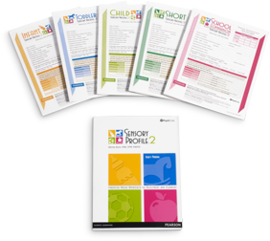Bayley Scales of Infant and Toddler Development, Third Edition
Bayley-III- Bayley Scales of Infant and Toddler Development, Third Edition (Bayley-III) examines all the facets of a young child's development. Children are assessed in the five key developmental domains of cognition, language, social-emotional, motor and adaptive behaviour.
Bayley-4 UK is now available to order. Learn More - IMPORTANT: Bayley-III Complete Kit is no longer available for purchase
Choose from our formats
-
Test forms & reports
Booklets, record forms, answer sheets, report usages & subscriptions
7 options
From £112.80 -
Support materials
Manuals, stimulus books, replacement items & other materials
7 options
From £87.60 -
All products
All tests and materials offered for Bayley-III
14 options
From £87.60
-
Bayley-III Motor Scale Record Forms
9780158027319 Qualification Level BPack of 25
-
Bayley-III Language Record Forms
9780158027654 Qualification Level BPack of 25
-
Bayley-III Cognitive Record Forms
9780158027647 Qualification Level BPack of 25
-
Bayley-III Caregiver Report Forms
9780158027579 Qualification Level BPack of 25
-
Bayley-III Cognitive, language and motor Record Forms
9780158027302 Qualification Level BPack of 25
-
Bayley-III Social-emotional and adaptive Behaviour Questionnaires
9780158027562 Qualification Level BPack of 25
-
Bayley-III Administration DVD
9780158027616 Qualification Level BEstimated to ship:More than 12 weeks -
Bayley-III Stimulus Book
9780158027333 Qualification Level B -
Bayley-III Manipulative Screener Set 1
9780158027357 Qualification Level BIncludes Bayley-II Set Of 2 Crayons (Group H), Bayley-II Bell (Group G), Bayley-III Spoon, Bayley-III Plastic Glass Clear, Bayley-III Bottle With Lid 33Mm, Bayley-III Oval Shoe Lace, Bayley-III Squeeze Toy, Bayley-III Ziplock Bag 12 X 5, Bayley-II Clr Box-Open End (Group E), Bayley-II Doll (Grp H), Bayley-II Rattle (Grp H), Bayley-II Ring W/ String (Grp I)
-
Bayley-III Administration Manual
9780158027289 Qualification Level B -
Bayley-III Manipulative Screener Set 2
9780158027395 Qualification Level BIncludes Bayley-II Set Of 5 Circles (Group D), Bayley-III Picture Book, Bayley III Wash Cloth - Yellow 50C, Bayley-III Blocks W/Hole Red 4, Bayley-III Blocks Red Set 8, Bayley-III Stepping Path, Bayley-III Story Book, Bayley-III Ziplock Bag 12 X 5, Bayley-II 9 Blue Blocks (Group A), Bayley-II Peg Set (Group B)
-
Bayley-III Manipulative Screener Set 3
9780158440804 Qualification Level BIncludes Bayley-II Comb (Group H), Bayley-III Pencil With Eraser, Bayley-II Car-Green (Bayleyii/Das/Map), Bayley-III Teddybear Small, Bayley-III Bank, Bayley-III Blocks 4 Small/2 Medium Connecting Blocks, Bayley-III Glitter Bracelet, Bayley-III Lacing Card 5, Bayley-III Memory Cards 3 Set Of 2, Bayley-III Mirror, Bayley-III Puzzle Set 3 (Ice Cream, Cornet Etc), Bayley-III Small Drawstring Bag, Bayley-III Ziplock Bag 12 X 5, Bayley-II 3 Red Blocks (Group A), Bayley-II Small Ball 2 Inch (Group H), Bayley-II Button Sleeve (Group F)
Estimated to ship:1 week -
Bayley-III Scoring Assistant Software
9780158027623 Qualification Level B -
Bayley-III Technical Manual
9780158027296 Qualification Level B
Overview
- Publication date:
- 2005
- Age range:
- 1 month to 42 months
- Qualification level:
- B
Product Details
|
Bayley-4 UK is now available to order. Learn More Benefits
Features
Bayley-III UK ValidationNow available, the Bayley-III UK and Ireland Supplement reports the results of the UK and Ireland validation study, general considerations for use of the Bayley lll in the UK and Ireland, and 8 case studies. A broadly representative sample of 221 children aged around 12 and 24 months in the UK and Ireland was included, taking into account geographic region, gender, age, ethnicity and parental education. The case studies present developmental history, assessment information, and interpretation of scores for eight children with one of the following conditions: birth asphyxia, prenatal exposure to substance abuse, seizures, speech and language difficulties, Cerebral Palsy, Down Syndrome or PDD. The EPICure Study is using Bayley-III - click EPICure Study for more information. |
FAQs
Administration
Scores and Scoring
Test-retest time
General
|


